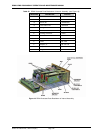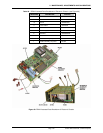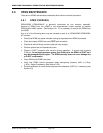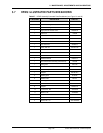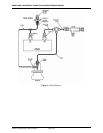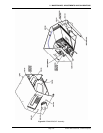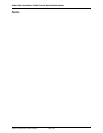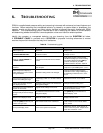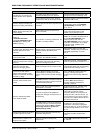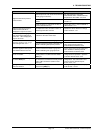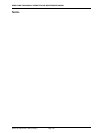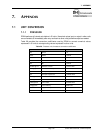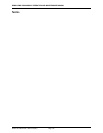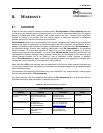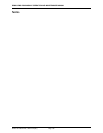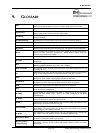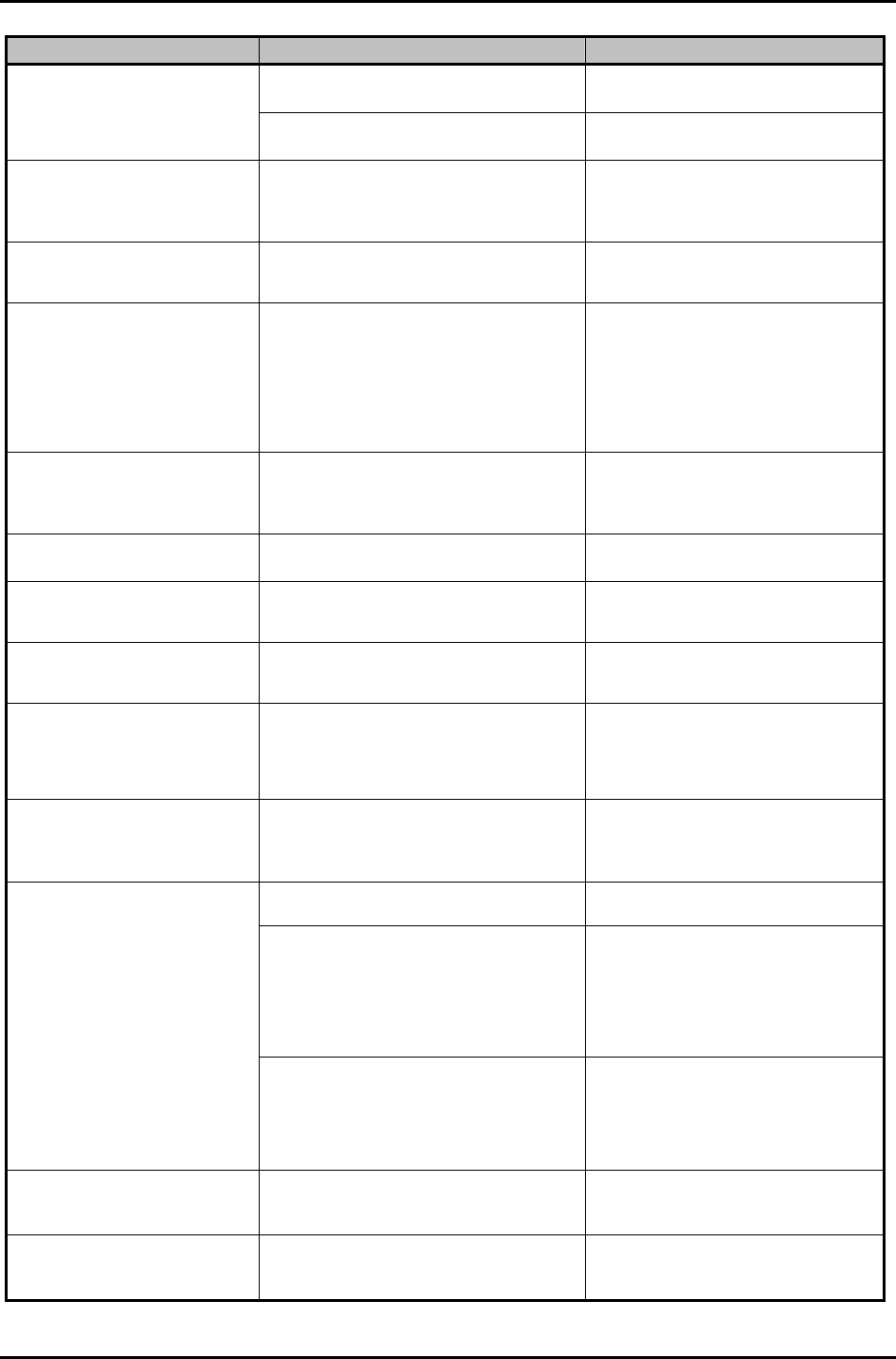
RPM4/HPMS A70M/A20M-AF OPERATION AND MAINTENANCE MANUAL
© 2007 DH Instruments, a Fluke Company Page 130
SYMPTOM PROBABLE CAUSE SOLUTION
The Q-RPT range does not cover the
specified AutoRange full scale pressure.
Check that Q-RPT default range is high
enough to cover the AutoRange. 3.2.3
AutoRange is not selecting the
desired Q-RPT for the specified
range.
The specified operating mode is absolute
and absolute is OFF for the desired Q-RPT
Check that absolute measurement mode is
ON for the Q-RPT. 5.3.5
Pressure display is flashing and
beeper is sounding intermittently.
Current upper limit of active range has been
exceeded.
Reduce pressure. Change UL and/or
change active range using [RANGE],
[AUTORANGE] or AutoTest. 3.4.4,
3.3.4, 3.3.10
“Hi (or Lo) Q-RPT EXCEEDED
PMAX” displays alternating with
normal display.
RPM4 Q-RPT has been overpressured
(Pmax! exceeded).
Correct the overpressure condition and
cycle power ON and OFF to clear.
Q-RPT may be damaged! 3.4.4.1
Display is
<!!!LO RPT ACTIVE!!!>
the HPMS CAUTION LO RPT
ACTIVE light is flashing and
RPM4 is beeping.
The Lo Q-RPT is receiving pressure but the
Hi Q-RPT is currently selected.
Since the Hi Q-RPT is selected on
RPM4, the Lo Q-RPT should be shut off
by the LO Q-RPT SHUTOFF valve.
Reduce pressure and close the
LO Q-RPT SHUTOFF valve or select the
Lo Q-RPT on the RPM4. Do not apply
more than 3 000 (20 MPa) to the
Lo Q-RPT. 3.2.5
A Ready (green Ready/Not Ready
indicator) indication is never
achieved.
Stability settings is too tight and/or existing
conditions will not allow Ready to be
achieved.
Adjust stability setting or correct other
conditions. Consider using an AutoTest to
set stability appropriately. 3.4.3, 3.2.1,
3.3.10
Cannot select absolute
measurement mode.
Absolute measurement mode has been
turned off in the calibration function.
Check that absolute is ON for the Q-RPT.
5.3.5
Display update rate of indicated
pressure changes when changing
pressure.
RPM4 automated read rate function is ON to
automatically adjust read rate depending
upon rate of change of pressure.
Operation is normal. Turn automated
read rate function OFF if desired. 3.5.7.2
Display update of indicated
pressure is too slow when
pressure is changing quickly.
RPM4 automated read rate function is OFF.
Turn automated read rate function ON to
automatically adjust read rate depending
on pressure rate of change. 3.5.7.2
Pressure is changing but display
of pressure is NOT and the
bottom right hand corner of the
display is a numerical countdown
followed by <avg>.
Average DISPLAY function is ON and
pressure display is updating only with the
average value at the end of each averaging
cycle.
Go to a DISPLAY function other than
average or press [+/-] to get the
instantaneous value Average DISPLAY.
3.3.6
Pressure measurement seems
erratic.
The RPM4 and/or the connection to the test
system and or the GPC1 pressure controller
is contaminated with liquids.
Purge and clean affected systems.
Contact DHI Authorized Service
Provider if RPM4 is contaminated
internally. 8, Table 23
These is a leak in the pressure system to
which RPM4 is connected.
Find and correct leak. Consider using
RPM4 leak check function. 3.3.5
The pressure applied to the RPM4 has
recently been changed and the pressure is
still stabilizing.
The time it takes for pressure to stabilize
after making a pressure change
increases with the size of the pressure
change and size of the test volume. Up
to five minutes or more can be required
for pressure to stabilize within 0.001% of
the measured pressure
Pressure indicated by RPM4
never becomes stable.
The RPM4 display resolution is higher than
is necessary and you are observing normal
evolution of the pressure (Note: if viewed
with enough resolution, pressure is
NEVER perfectly stable).
Use the resolution setting function,
AutoRange or AutoTest to reduce
resolution to a level that is appropriate
for the test being run or the uncertainty of
the device being calibrated. 3.4.2, 3.3.4,
3.3.10
Disagreement between two Q-RPTs
in system appears excessive.
Difference is actually within tolerance and
acceptable disagreement.
Compare differences observed to
tolerances on Q-RPT measurements.
1.2.2.1
Apparent inaccurate pressure
control/measure and little or no
response from Q-RPT:
Reference transducer destroyed by
overpressure.
Contact DHI Authorized Service Provider.
8, Table 23



